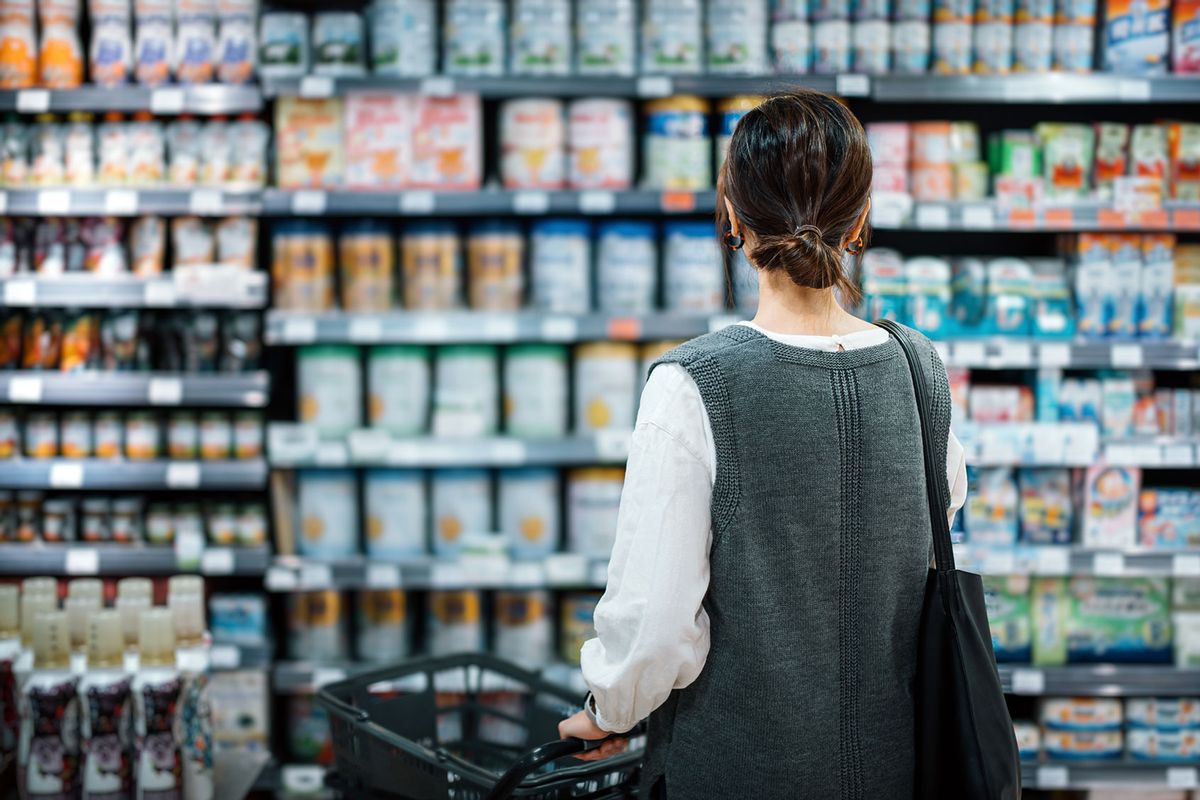Ultra-processed foods (also called “UPFs”), the newfound villain within the food industry, have spurred much discourse amongst food experts, scientists, and consumers alike. In recent years, concerns regarding the potential health risks of such foods reached a fever pitch — so much so, that one nutritional scientist is now calling for tobacco-style warnings to be placed on UPFs.
Carlos Monteiro, the Brazilian epidemiologist who coined the term ultra-processed food, will discuss the dangers of UPFs in both children and adults at the International Congress on Obesity this week. Ahead of the conference in São Paulo, Monteiro said in a statement to The Guardian that UPFs are “increasing their share in and domination of global diets, despite the risk they represent to health in terms of increasing the risk of multiple chronic diseases.”
“UPFs are displacing healthier, less processed foods all over the world, and also causing a deterioration in diet quality due to their several harmful attributes,” he continued. “Together, these foods are driving the pandemic of obesity and other diet-related chronic diseases, such as diabetes.”
In Latin America, several countries have already taken the initiative to print nutritional warning labels on the fronts of food packages. In 2010, Mexico became the first country in the region to move the “daily guidance amounts” label to the fronts of packages, The Guardian reported in May. Ecuador followed suit four years later with its “traffic light” label, which associates different colors (red, yellow, and green) to the levels of various nutrients in a specific food. And in 2016, Chile implemented a black, octagonal warning label that encouraged other countries including Peru, Uruguay, Mexico, Argentina, and Colombia to mandate similar labels. Many of these countries are working to implement labels specific to UPFs, although existing warning labels already encompass the majority of available UPFs.
Food packaging labels for UPFs have yet to be introduced in the United States, where 73% of the food on grocery store shelves is ultra-processed. Monteiro said stricter measures are necessary, especially as UPFs continue to be more widespread and threaten consumers’ health. Studies and reviews merely outlining the potential health risks associated with UPFs aren’t enough — a more in-your-face approach is required, Monteiro said.
“Public health campaigns are needed like those against tobacco to curb the dangers of UPFs,” he told the Guardian in an email. “Such campaigns would include the health dangers of consumption of UPFs.
“Advertisements for UPFs should also be banned or heavily restricted, and front-of-pack warnings should be introduced similar to those used for cigarette packs,” Monteiro continued, specifying that UPFs should be banned from schools and health facilities and taxed.
UPFs remain a divisive topic today and research into the foods is still ongoing. Simply put, UPFs are commercially manufactured food products that have undergone significant processing. Because UPFs don’t resemble their raw ingredients, they are typically high in refined sugars, salt, artificial colors, emulsifiers and sweeteners. Common examples of UPFs include breakfast cereals, packaged snacks, soft drinks, candy and flavored yogurts.
Want more great food writing and recipes? Subscribe to Salon Food’s newsletter, The Bite.
Although many studies have found that UPFs contribute to a greater risk of health problems — like obesity, hypertension, heart disease, and Type 2 diabetes — one recent study found that not all UPFs are detrimental. The study used 30 years of data from two large U.S. cohorts to examine the associations of ultra-processed food with mortality. When analyzing UPFs by sub-category, researchers found that mass-produced wholegrain products, like wholegrain breads and wholegrain breakfast cereals available at most local supermarkets, weren’t linked to poor health. The study also found that in individuals who routinely ate a healthy diet (one that is rich in fresh produce and whole grains, along with healthy fats, and low in unhealthy fats, sugar and salt), there was no clear relationship between the amount of UPFs they ate and a risk of early mortality.
The study concluded that while most UPFs should be eaten in moderation, not all UPFs are inherently harmful and should be restricted — or vilified.
Monteiro didn’t specify which UPFs should be branded with tobacco-style warnings on their packaging. In his email to The Guardian, Monteiro said he plans to draw comparisons between UPFs and tobacco companies while speaking at the conference. That association, however, was described as “very simplistic” by registered dietitian and nutritionist Dr. Hilda Mulrooney.
“It is not as easy to reformulate some classes of foods to reduce them and they are not the same as tobacco because we need food — just not in the quantities most of us are consuming,” she told The Guardian.
Read more
about ultra-processed foods:
